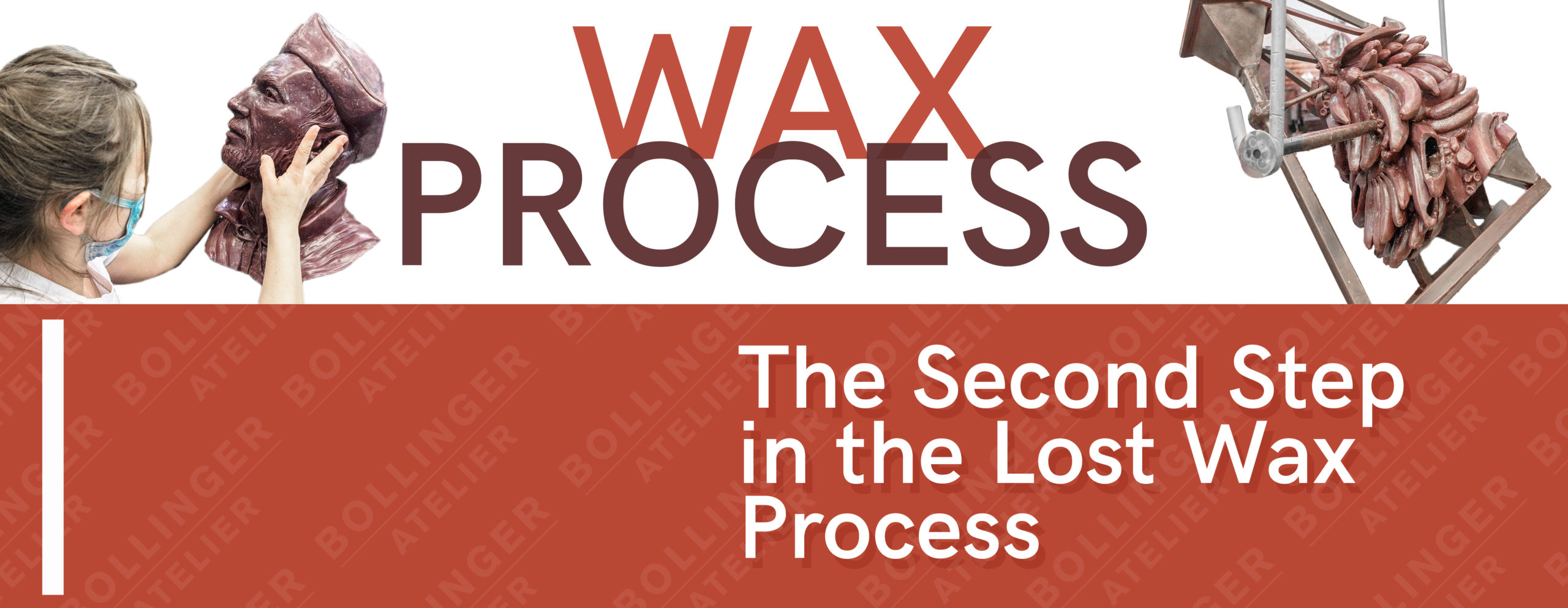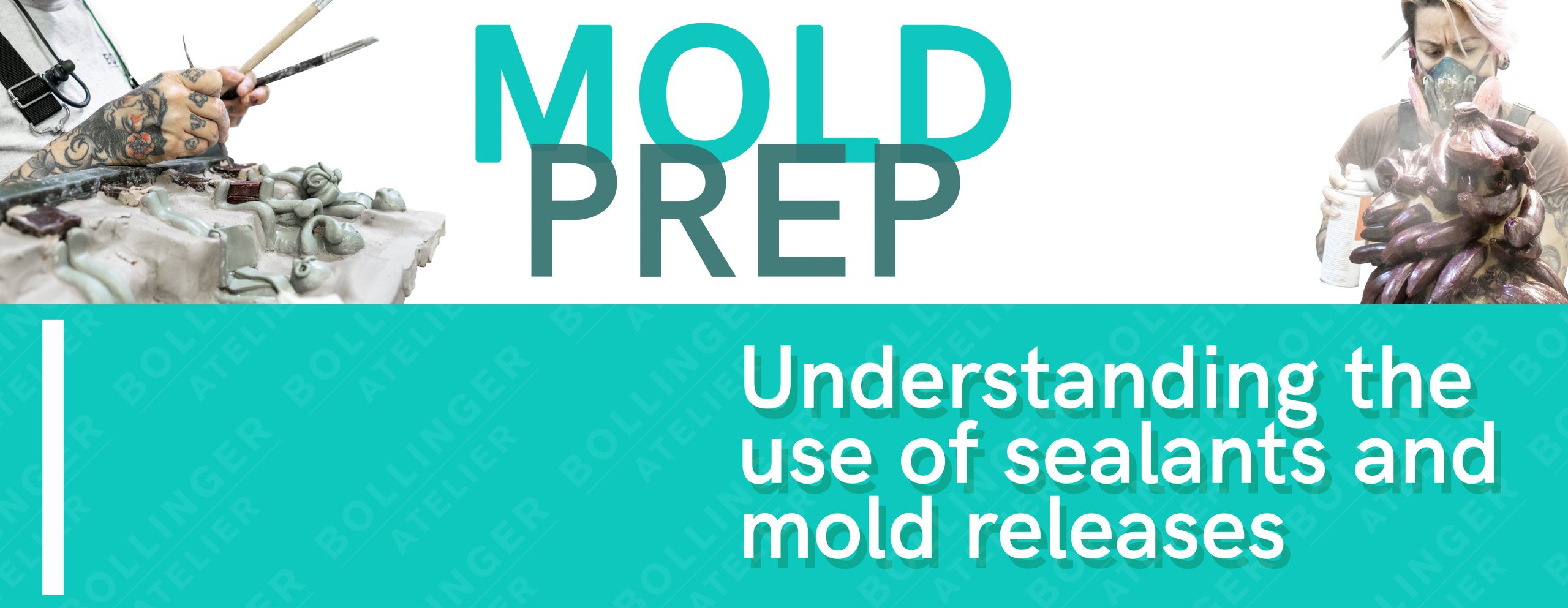Interview by Daniel Mariotti
Photos by Daniel Mariotti and Brad Corso
Coming from Twin Lakes, Wisconsin to the warm winters of Tempe, Arizona; Bradley Corso is one of the newest additions to the Bollinger Atelier team. We sit down at the foundry after normal working hours are done. He had poured 1000 lbs of bronze this week. Clearly tired, his eyes are still excited. As if today’s work fuels his energy.
BA: What does a typical day look like for you?
Brad: On a typical day I can be found loading molds for wax burnout, preparing molds for pour. Pouring bronze/aluminum/tombasil, de-vesting, and when all that’s done I help wherever it’s needed in multiple departments.
BA: What was your first day here like?
Brad: My first day was 6 months ago and it consisted of mostly getting to know the foundry floor space and the everyday flow of things.
BA: What is the tool you use the most here?
Brad: It’s a toss up between my body and my brain.
BA: How often do you sharpen and maintain that tool?
Brad: I try to every day. Common sense is the biggest tool in these situations because the process may be the same on paper; but every single piece (even if it’s the same edition) all are different and have specific needs.
BA: Tell me about the first foundry you worked at?
Brad: Worked at River’s Edge Foundry which later became Beloit Art foundry in Beloit Wisconsin. Mostly made one artist’s work, Donald Reed who had a long standing relationship with the foundry owner and needed an assistant for monumental work done which I serendipitously fell into. It was essentially his private foundry.
BA: Did you feel like you had plateaued?
Brad: It wasn’t even a plateau it was sort of like you start scratching your head like now what? It wasn’t dependant on the art market, we were just this little bubble and it was very frustrating. So having the challenge of being in a real world situation and a very competitive world at that, being here is sort of mind blowing that people do this and I can be a part of it.
BA: What was coming to Bollinger like in terms of variety of artists we work with?
Brad: It has been fantastic, the other foundry I was at was just so static. Here everything is moving all the time and it is dependent on us for it to move, that’s more my pace. Being here, everything is so progressive and transparent and on the table. We know what we are getting into, everything is very clearly deliberated to us and the communication here is fantastic.
BA: What is the most inspirational piece you have worked on here?
Brad: I thoroughly enjoy and draw inspiration from changing my perspective from project to project. It’s also what’s most challenging. Putting my own artistic needs aside and just allowing others to use my skills to create their work.
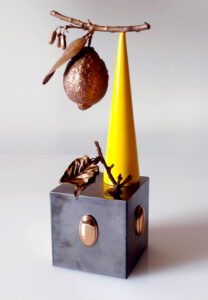
BA: As running the pour team you don’t get much time helping out in other departments, is that the position you want to be in?
Brad: At the previous foundry I did everything. I love chasing and patination is very satisfying. But I really love being outside in the foundry. It’s such a nostalgic position really. When people think of bronze work, they think of that hot crucible. That’s what everyone wants to see. It’s also the most dangerous part, which is what always drawn me into that position. It makes you feel alive. There’s this sort of flowing choreography out there that just sort of happens in a certain way. There’s a rhythm in that space when the fire is on, it’s almost ritualistic and that brings me to that process. It’s also a test of endurance that is something I need as an individual.
BA: You also play music, how does that interplay with working at the foundry?
Brad: They are a different head-space but they inevitably bleed into each other. Playing my guitar is how I unwind at the end of the day. I try to always listen to my surroundings. Like when I’m on the foundry floor, it’s loud out there and it’s really easy to put in headphones and listen to music, but I like to listen to the foundry. I like to listen to people working, Just things like that become really lyrical to me. And usually I’m stuck in my head anyway. But music is a separate part of my head-space. There’s never really been a conflict with it. Being an artisan is what pays my bills and what gets me through the day where as being a musician; I’ve tried that, and that is a really hard lifestyle and one that I wasn’t willing to dedicate myself into.
BA: What role does the artist have in society?
Brad: I think too often the concept of an artist is over romanticized. Either way, artists typically serve as role models for creative thinking.
BA: What does your personal work aim to say?
Brad: My personal work mostly focused on saying very little conceptually, but a lot in terms of craftsmanship.
BA: How did your work change whilst you were in school? And how has it changed since leaving?
Brad: I got way more practical. If I have to haul this around, I’m not making it. If it’s not bought and sold I’m probably not making it. And that’s where I’ve come to, I’m not a heavily conceptual artist, things just need to look proper. I’m not trying to express myself through the image of the piece but rather through the context of the piece. So by being present in these processes with the people who do this stuff every day and make super stellar things, I can align myself that way and be satisfied that way instead of patting myself on the back for completing another thing. And storing it.
BA: Yeah, a lot of your work seems graphic design inspired; clean, crisp, and colorful.
Brad: Totally. But that’s the thing, even if I make a piece that’s sort of a realistic base there’s a vibe to that. Sort of maybe I should question what this is because this is reality. And I’m usually concerned with fact based things like that.

BA: But it also parallels with the album covers of the bands you listen to. What was that one you just posted called?
Brad: STRFKR. Yeah. Great pallette.
BA: Tell me about your current work, the banana bowls.
Brad: Sure! There’s something about the symbolism of fruit, the language behind them and sort of the way they are formed. The sort of sugar, crystalline, nature treat. And I’ve been obsessed by that. But honestly I just like fruit. It’s that simple.
BA: So really you let other people narrate your work instead of giving it to them.
Brad: Yeah, I mostly want to give them something that’s so tight you can’t dispute it, and then you just accept it and all of a sudden it takes on meaning. That’s my goal.
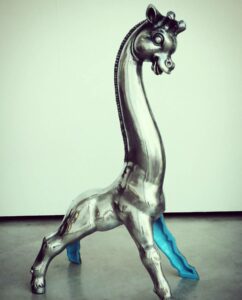
BA: Does your work take on any community?
Brad: I wish it had more community but I’m really terrible at stuff like that. I tend to just shut myself off. I started out as a painter and that’s such a painter thing to do to just shut your door and go to work. But being at a foundry I know I need at least 2 or 3 other people to do it right. And that sort of forced me into a community situation. It’s also given me a lot of connections that way.
BA: Seems efficient.
Brad: Yup
BA: Yup
Brad: Everything else needs a community though. And that’s what I like about being here. We have a staff of amazing people and they give us such a good deal with our own personal work. We can run through production and end up with a product that’s industry standard, it’s fantastic.
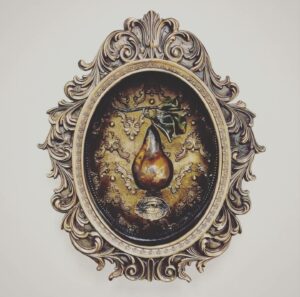
You can find Brad’s work through his website: www.bradleycorso.com
Instagram page: death_cat



